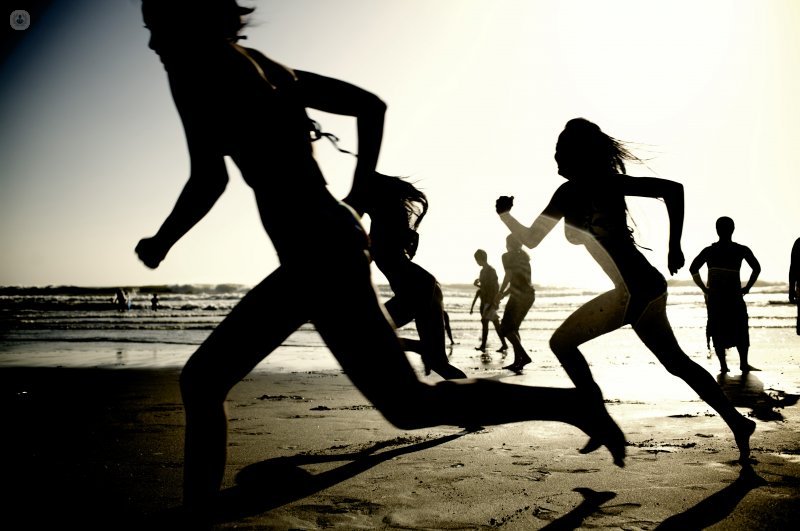Runner's knee: causes, symptoms and treatment
Written by:When we run one kilometer, we approximately 2,000 steps, at a rate of 4 minutes, causing a knee strength three to four times our own body weight. Thus, during a popular 5K, with goal in 20 minutes, our knees will need to stretch and flex more than 10,000 times, holding an equivalent effort to triple our weight.
Symptoms of knee injuries
 One of the muscle-tendon is more overloaded "the band or iliotibial band" elements. When this happens a pain in the outside of the knee it appears while running, walking or cycling. It starts with a slight discomfort during the first and second day, which is accentuated during filming, so that within 10-20 minutes from the start of the activity forces you to stop.
One of the muscle-tendon is more overloaded "the band or iliotibial band" elements. When this happens a pain in the outside of the knee it appears while running, walking or cycling. It starts with a slight discomfort during the first and second day, which is accentuated during filming, so that within 10-20 minutes from the start of the activity forces you to stop.
When the patient is at rest no pesky, but performs the same activity as pain arises in the same or shorter time interval and manifested more intensely. The point of maximum pain is felt when the knee is flexed to 30 °, ie, when the pace is slow. Iliotibial band when it is at 30 ° of flexion suffers the maximum friction with the most protruding from the outer side of the knee area, the lateral femoral condyle. The more time and greater intensity rubs, there is greater likelihood that the streak to swell. By the mechanism of production, some specialists in Traumatology call it the "wiper syndrome".
Factors iliotibial band syndrome
On the other hand, there are internal and external factors that favor this syndrome as alterations in the tread, misalignment and dysmetria, ie, varying degrees of lower extremities; weak muscles, especially the gluteus medius, the increase in volume or intensity of training, downhill racing, improper or worn shoes, not the recommended hours rest, eating a poor diet, poor hydration, among others.
Diagnosis and treatment of knee injuries
The diagnosis in this type of sports injuries is mainly clinical, hence the importance of a specialized assessment, since many times the imaging tests such as X-rays or magnetic resonance imaging (MRI) are not valid.
The anti-inflammatory treatment is not effective if the run or bike is not interrupted. Corticoid infiltrations facilitate quick control of inflammatory symptoms, but prevent solve the root problem. For these reasons, it is essential the correct assessment by the specialist.


